In American Trap Shooting, participants shoot at targets that are moving away from them at predictable angles. Compared to skeet or sporting clays, trap shooting tends to be much easier–especially for beginners. It is a great sport to get into if you want to shoot competitively. With some basic instruction and a few rounds, it’s possible to start hitting more targets than you miss. Being able to experience some degree of success when you are first starting out is satisfying, and it keeps many shooters coming back for more.
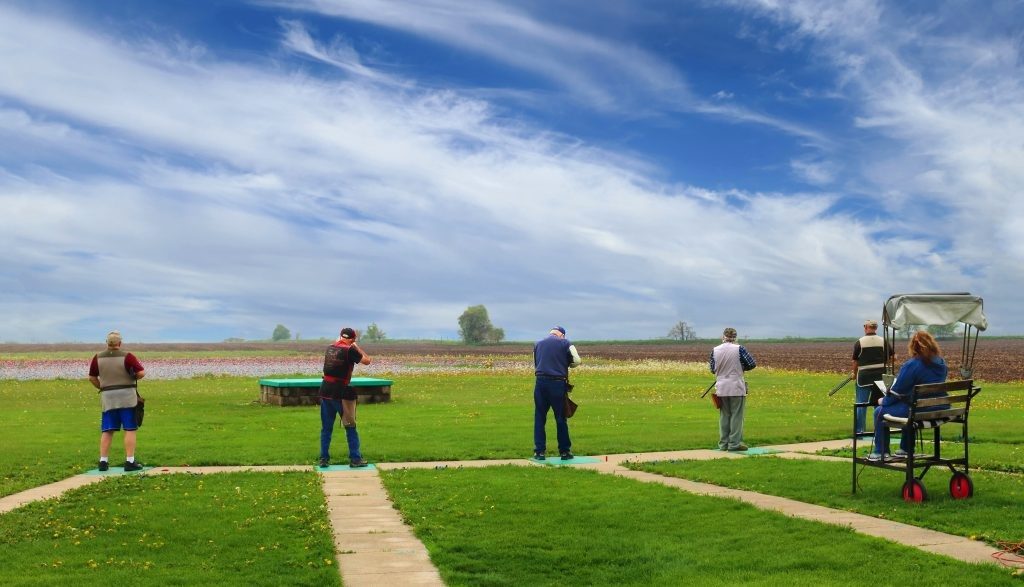
Once you really start getting the hang of trap shooting, you may want to think about entering a competition. Trap shooting competitions are a lot of fun, and they sometimes offer up some pretty lucrative prizes. As a novice, though, you may feel a bit intimidated about joining a competition and not knowing what to expect. We’ve put together this trap shooter’s guide to help you prepare for your first competition. Keep reading to learn more!
How a Trap Competition Works
Let’s start with the basics. For the purposes of this article, we will be talking about American Trap singles, during which you have one chance to make each shot. A round of trap consists of 25 targets. Each person in a squad–typically consisting of five people–fires at five targets from five different shooting positions. Each person starts at a different position and takes a shot. Once everyone has taken their first shot, this is repeated four times so that each shooter shoots five times from their starting position.
Once the last person has fired their fifth shot, each shooter moves one position to the right with the shooter on the far right moving around into the first spot. This continues until each person has fired at five targets from each of the five positions.
A round of trap consists of 25 shots per person, but during a competition, you’ll typically be shooting 100 or 200 rounds. There are breaks in between rounds, and depending on the size of the event, you may shoot from multiple fields. Essentially, a competition consists of 200 one-shot competitions.
Trap Shooting Equipment
In basic singles trap, you can use just about any shotgun you prefer. You will want either a 20-gauge or 12-gauge, though, to ensure that you are firing enough shot downrange to break the target. You can use a pump action, semi-auto or over and under shotgun.
As long as it is capable of firing off one shot at a time, nearly any shotgun is suitable for this sport. An over and under gun is often the easiest option for beginners, but if you already have a pump action or a semi-auto that you love, feel free to use it! Using a gun that you are comfortable with will go a long way toward helping you perform well at the event.
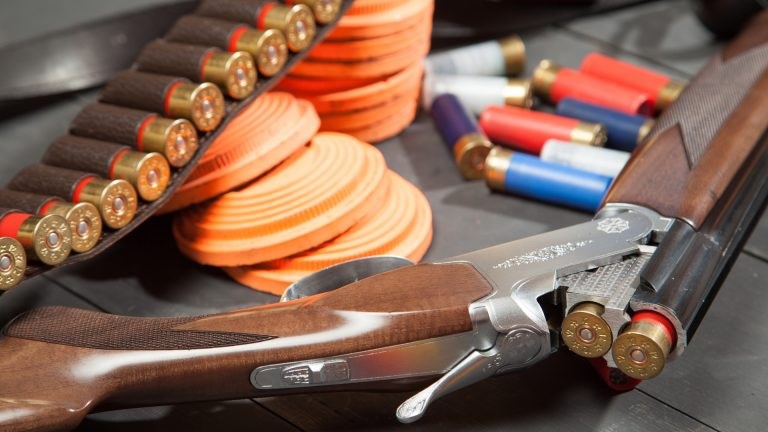
Trap Shooting Etiquette
If you are thinking about entering a trap shooting competition, proper etiquette may be the furthest thing from your mind. It is incredibly important, though, and it’s often one of the most intimidating and challenging aspects of competition shooting. There are all sorts of unwritten rules about how you should behave during a competition, and if you aren’t familiar with them, you could inadvertently make a mistake or offend someone.
For starters, following proper gun safety protocol is always a must. Don’t load your gun until it is your turn to shoot, keep your weapon pointed downrange and never fire when someone is on the range. And no matter how frustrated you get after a bad shot, do not throw your firearm downrange in a fit of rage! When everyone follows proper safety protocol and uses common sense, it is possible to avoid potentially deadly accidents.
You’ll also want to make sure you are a good neighbor during the competition. When it’s getting close to your turn, be mindful of the shooter to your left. Don’t make any noise when that person is about to shoot. Avoid working your gun action so you don’t distract them. If you are using a semi-automatic shotgun, buy a shell catcher. Shell catchers are inexpensive and they prevent your empty shells from being flung out toward the shooter on your right. When using a pump action, be gentle to avoid flinging your empty.
When you are not in the shooting position, your firearm should be clear and unloaded. Keep the action open and the muzzle pointed at the ground or the sky unless the organizers of the competition tell you to do something different.
Make sure you are prepared when stepping up to the shooting line to begin a round. You should have a full box of shells (plus a few spares) and hearing and eye protection. If you are unprepared, you can slow down the entire competition, and doing so is not a good way to make friends.
Trap Shooting Dress
Find out if there is a dress code prior to the event. If there isn’t, plan on wearing closed-toed shoes, jeans or long shorts and a decent shirt. Most clubs don’t allow things like sleeveless tees for safety reasons. A shooting shirt is always a good option. You may want to consider wearing a polyester sweat-wicking shirt as a base layer to help you stay cool and dry throughout the competition. If it’s chilly, it’s a good idea to wear a windproof jacket, too.
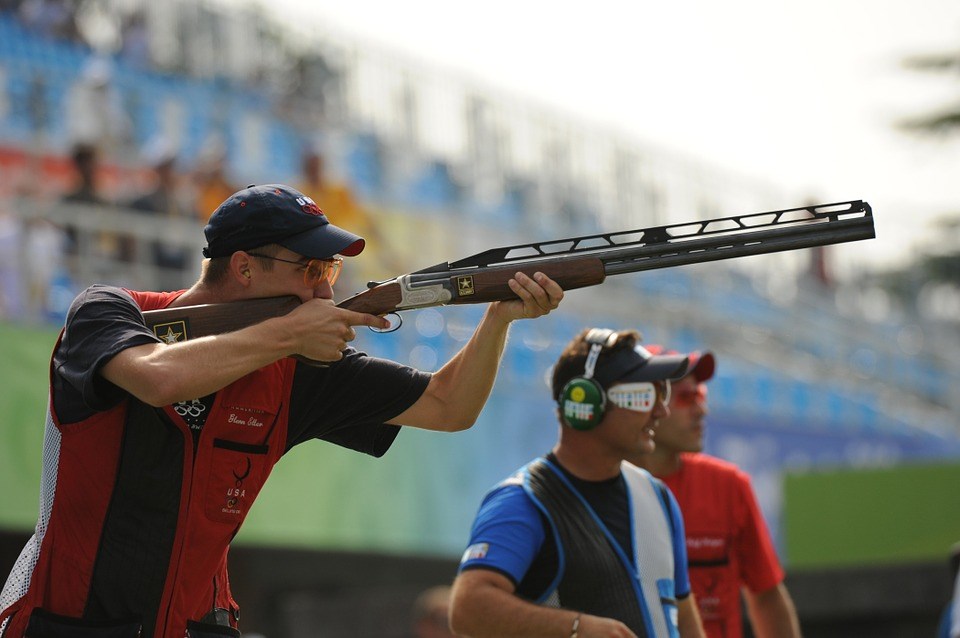
Conclusion
Trap shooting is a lot of fun, and joining a competition is a great way to get out and do something you love. With the information listed above, you can prepare yourself for your first competition and avoid making any potentially dangerous or embarrassing mistakes. Always remember the rules of gun safety and show good sportsmanship. Once you’ve made it through your first competition, you’ll likely be hooked and ready to sign up for the next one!
* This guest post is brought to you by our friend Morgan Clarke *
Morgan Walker Clarke is a writer and avid hunter from Dallas, Texas. He has 10+ years of writing experience and has been hunting ever since he was a child. In his spare time, he enjoys taking his dogs to the park, watching football, and spending time with his wife and twin sons.

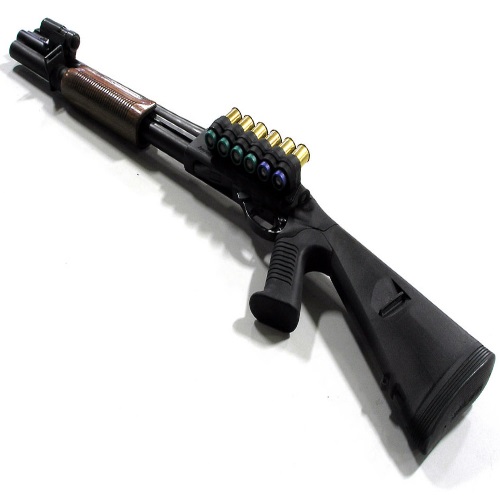
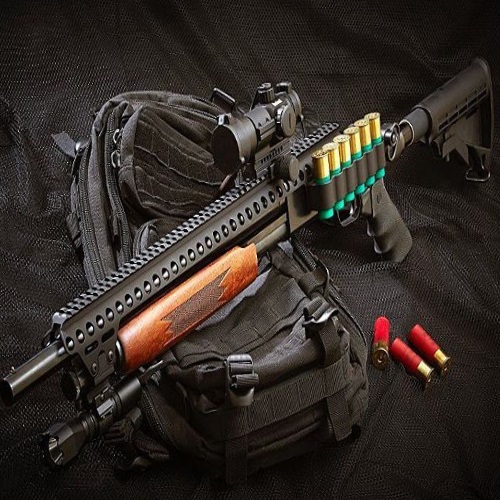
Hello, I’m 14 years old, I would like to register for competition shooting. I don’t care about prizes. I have had 2 years of shooting experience and I average out at 42/50. Any recommendations for upcoming tournaments in California?
If you use a semi auto, push the bolt release to load your shell just after the shooter to your left (or far right if you’re at stand 1) fires at their clay. This way you won’t disturb any other shooter or call a clay to launch when the bolt slams closed.
Enjoy, a great game!